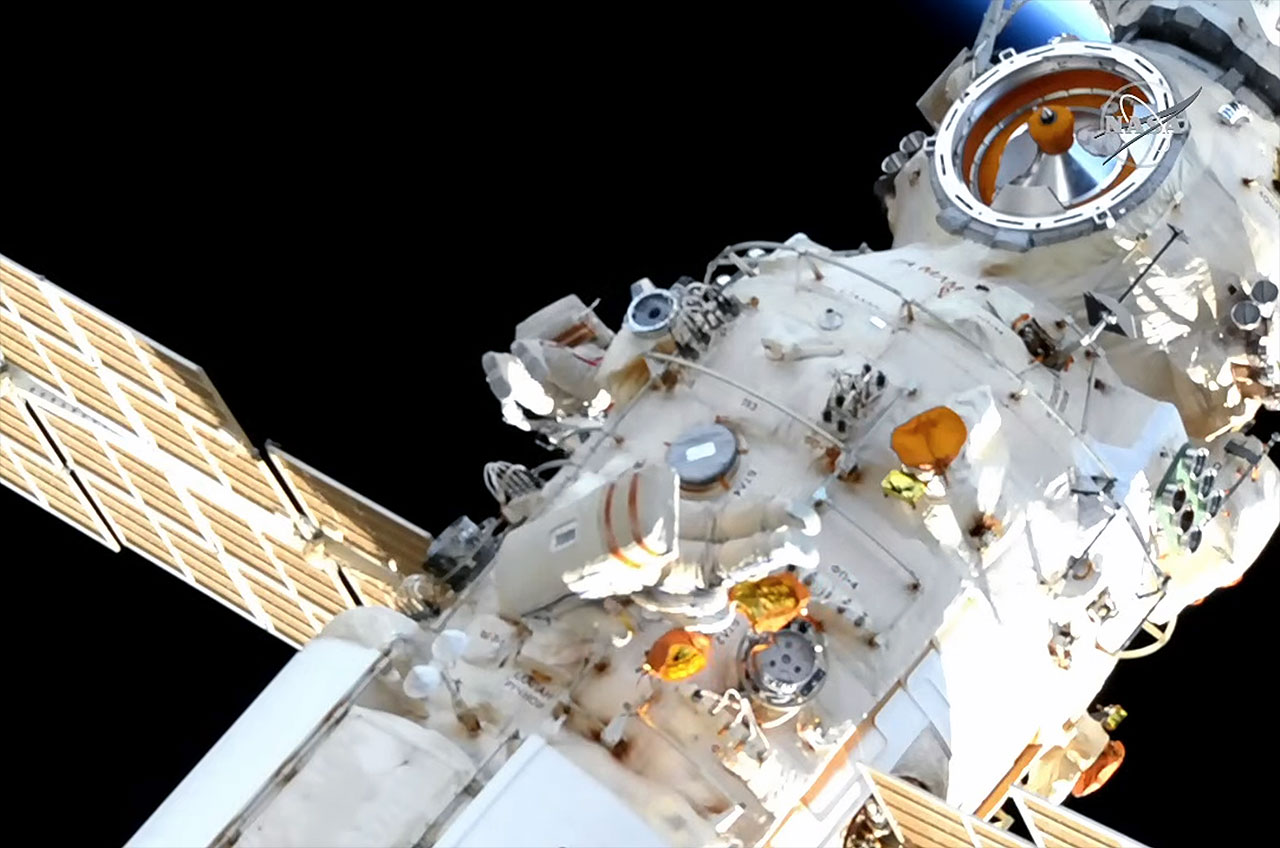Two cosmonauts began the work needed to add a European-built robotic arm to the outside of the International Space Station on Monday (April 18), completing the first in as many as seven spacewalks planned to activate the new remote manipulator.
Expedition 67 flight engineers Oleg Artemyev and Denis Matveev, both of Russia’s federal space corporation Roscosmos, exited the station’s Poisk module on the space-facing side of the station’s Russian segment at 11 a.m. EDT (1500 GMT), beginning the 6 hour, 37-minute extravehicular activity (EVA).
The two spacewalkers then made their way to the side of the Nauka multi-purpose laboratory module, where the new arm has been mounted since its launch with the module in July 2021.
International Space Station: Facts, history and tracking
Once configured, the European Space Agency’s (ESA) European Robotic Arm (ERA) will be the first such device able to service the exterior of the Russian segment on the International Space Station. The Canadarm2 and Japanese Experiment Module Remote Manipulator System (JEMRMS) on the station’s U.S. Operating Segment (USOS) cannot extend out far enough to reach many of the needed areas on the Russian segment.
Like the Canadarm2, the ERA was designed with the ability to move like an inchworm, positioning hand-over-hand between fixed base points. The 37-foot-long (11.3 meters) robotic arm will be able to be driven by crew members from both inside and outside the space station.
To enable the latter, the first task for Artemyev and Matveev on Monday was to connect a control panel for the robotic arm on the exterior of the Nauka module. A subsequent diagnostics test confirmed that the EVA Man Machine Interface (EMMI) was receiving power and was in good order.
The two spacewalkers then worked on removing protective covers from payload interfaces and base points, which the arm will use to affix itself to the outside of the space station in the future. Artemyev and Matveev also removed a cover from the elbow of the ERA and installed three handrails to ease future work on and around the arm.
The cosmonauts completed their tasks by installing a portable workstation adapter near the arm, which will be used to house payloads before they are moved by the arm to various points outside of the station. Artemyev and Matveev reentered the Poisk module at 5:37 p.m. EDT (2137 GMT), bringing their spacewalk to an end.

Monday’s EVA was the fourth in Artemyev’s career, and the first for Matveev. Artemyev now has logged a total of 26 hours and 57 minutes working in the vacuum in space.
The spacewalk was the fourth outside of the International Space Station in 2022, the first during Expedition 67 and the 249th for assembly, maintenance and upgrades since 1998.
Artemyev and Matveev are scheduled to conduct another spacewalk together on Thursday, April 28, when they will continue preparing the European Robotic Arm for use.
Follow us on Twitter @Spacedotcom or on Facebook.

